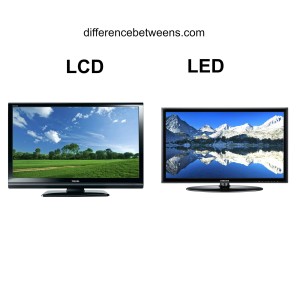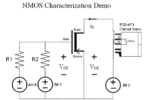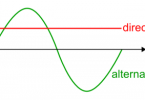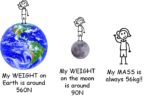Difference Between LCD and LED
Summary: Difference Between LCD and LED is that LCD monitor is a desktop monitor that uses a liquid crystal display to produce images. These monitors produce sharp, flicker-free images.

LCD
LCD monitor is a desktop monitor that uses a liquid crystal display to produce images. These monitors produce sharp, flicker-free images. LCD monitors have a small footprint; that is, they do not take up much desk space. LCD monitors are available in a variety of sizes, with the more common being 19, 20, 22, 24, 26, 27, and 30 inches — some are 45 or 65 inches. Most are widescreen, which are wider than they are tall. You measure a monitor the same way you measure a television, that is, diagonally from one corner to the other.
Mobile computers and mobile devices often have built-in LCD screens. Many are widescreen; some are touch screen. Notebook computer screens are available in a variety of sizes, with the more common being 14.1, 15.4, 17, and 20.1 inches. Netbook screens typically range in size from 8.9 inches to 12.1 inches, and Tablet PC screens range from 8.4 inches to 14.1 inches. Portable media players usually have screen sizes from 1.5 inches to 3.5 inches. On smart phones, screen sizes range from 2.5 inches to 4.1 inches. Digital camera screen sizes usually range from 2.5 inches to 4 inches. Read Innovative Computing 5-1 to find out about another use of LCD screens.
LCD Technology and Quality
A liquid crystal display (LCD) uses a liquid compound to present information on a display device. Computer LCDs typically contain fluorescent tubes that emit light waves toward the liquid-crystal cells, which are sandwiched between two sheets of material. The quality of an LCD monitor or LCD screen depends primarily on its resolution, response time, brightness, dot pitch, and contrast ratio
- Resolution is the number of horizontal and vertical pixels in a display device. For example, a monitor that has a 1440 3 900 resolution displays up to 1440 pixels per horizontal row and 900 pixels per vertical row, for a total of 1,296,000 pixels to create a screen image. A higher resolution uses a greater number of pixels and thus provides a smoother, sharper, and clearer image. As the resolution increases, however, some items on the screen appear smaller. With LCD monitors and screens, resolution generally is proportional to the size of the device. That is, the resolution increases for larger monitors and screens. For example, a widescreen 19-inch LCD monitor typically has a resolution of 1440 3 900, while a widescreen 22-inch LCD monitor has a resolution of 1680 3 1050. LCDs are geared for a specific resolution
- Response time of an LCD monitor or screen is the time in milliseconds (ms) that it takes to turn a pixel on or off. LCD monitors’ and screens’ response times range from 3 to 16 ms. The lower the number, the faster the response time.
- Brightness of an LCD monitor or LCD screen is measured in nits. A nit is a unit of visible light intensity. The higher the nits, the brighter the images.
- Dot pitch, sometimes called pixel pitch, is the distance in millimeters between pixels on a display device. Average dot pitch on LCD monitors and screens should be .30 mm or lower. The lower the number, the sharper the image.
- Contrast ratio describes the difference in light intensity between the brightest white and darkest black that can be displayed on an LCD monitor. Contrast ratios today range from 500:1 to 2000:1. Higher contrast ratios represent colors better.
LCD vs LED
LCD
Thickness 1 inch Minimum.
Power consumption Requires less power to control in comparison to plasma, however over OLED
Screen size 13″ to 57″
Burn-in Not a problem
Life span 50,000 to 100, 000 hours
Cost Much cheaper
Mechanism Backlight lined by a layer of liquid crystals
Backlight Yes
LED
Thickness LED edge backlit LCD’s are diluent than CCFL LCD’s. typically but 1″.
Power consumption LED-lit LCD consume less power around seventieth compared to plasma .
Screen Up to 90″.
Burn-in is extremely rare
Life span Around one hundred,000 hours
Cost $100 (small size and extremely low end) to $25,000
Mechanism light emitting diodes
Backlight Yes
Also Read:




Leave a Comment
You must be logged in to post a comment.